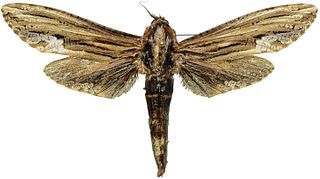
The Zeuzerinae are a subfamily of the family Cossidae.

Chalcidica minea is a moth in the family Cossidae. It is found in India, Vietnam, Myanmar, Thailand, the Moluccas, Papua New Guinea, Queensland and on the Solomon Islands. The habitat consists of lowland rainforests.

Duomitus is a monotypic moth genus in the family Cossidae described by Arthur Gardiner Butler in 1880. Its only species, Duomitus ceramicus, described by Francis Walker in 1865, is found in Yunnan in China and from southern India and Malaysia to Sumatra, Ceram and New Guinea.
Skeletophyllon is a genus of moths in the family Cossidae.
Trismelasmos is a genus of moths in the family Cossidae.
Skeletophyllon kalinini is a moth in the family Cossidae. It was described by Yakovlev in 2011. It is found in New Guinea.
Trismelasmos cinerosa is a moth in the family Cossidae. It was described by Roepke in 1955. It is found in New Guinea. The habitat consists of both lowland and mountainous areas.
Trismelasmos jordani is a moth in the family Cossidae. It was described by Roepke in 1955. It is found in New Guinea. The habitat consists of areas at moderate and higher altitudes.
Trismelasmos papuana is a moth in the family Cossidae. It was described by Roepke in 1955. It is found in New Guinea, where it has been recorded from Papua, Papua New Guinea and the Dampier Archipelago.
Trismelasmos minimus is a moth in the family Cossidae. It is found in New Guinea, where it has been recorded from Papua, Papua New Guinea and the Bismarck Archipelago. The habitat consists of lowland and coastal areas.

Endoxyla cinereus, the giant wood moth, is a moth in the family Cossidae. It is found in Australia and New Zealand. The species was first described in 1890. A rare contemporary sighting of the moth at a school in Australia garnered notice as an editor's pick among the daily headlines of the New York Times on May 8, 2021.
Endoxyla columbina is a moth in the family Cossidae. It is found in Australia, where it has been recorded from Queensland and New South Wales.
Endoxyla coscinopa is a moth in the family Cossidae. It is found in Australia, where it has been recorded from Western Australia.
Endoxyla coscinophanes is a moth in the family Cossidae. It is found in Australia, where it has been recorded from Western Australia and South Australia.
Endoxyla dictyoschema is a moth in the family Cossidae. It is found in Australia, where it has been recorded from Queensland and Western Australia.
Endoxyla didymoplaca is a moth in the family Cossidae. It is found in Australia, where it has been recorded from Western Australia.
Endoxyla grisea is a moth in the family Cossidae. It is found in Australia, where it has been recorded from Northern Australia.
Endoxyla phaeocosma is a moth in the family Cossidae. It is found in Australia, where it has been recorded from Northern Australia.
Endoxyla polyplecta is a moth in the family Cossidae. It is found in Australia, where it has been recorded from Northern Australia.
Endoxyla punctifimbria is a moth in the family Cossidae. It is found in Australia, where it has been recorded from Queensland, Western Australia and South Australia.



